Starting a new blog can be overwhelming. Which Niche Should You Choose? What should you write about to captivate your readers and keep them coming back for more? What writing style should you use to attract the right audience?
How should you write your blog post? Should you jump right in and provide relevant content to establish yourself as an expert in your niche? Should you create an introductory “About Me” post to share who you are and why you’re starting your blog?
The questions are piling up and the answers lie in research.
Whether you’re suffering from writer’s block or need help structuring your first blog post, browsing popular blogs will give you insight into how professionals do it. First blog post examples can inspire and point you in the right direction, helping you launch your new blog like a pro.
Check out some of the best examples and discover the top tips to follow when writing your first blog post.
Blog examples for inspiration
The online world is an endless source of inspiration with over 600 million blogs in various niches. However, fewer websites offer high-quality content that generates consistent traffic and attracts a loyal reading community.
Here are some of the most popular blog examples you can use for inspiration:
- Apartment therapy — This lifestyle blog offers interior design advice including DIY tips, shopping guides, budget hacks, and cleaning and organizing tricks. All posts have a clear, SEO-friendly structure with lots of images and a consistent flow to engage readers.
- Corporettes — This work fashion blog offers career, lifestyle and fashion tips for working women. It’s the definitive blog for corporate wardrobe essentials, courtesy of Kat Griffin, formerly a litigator at a Wall Street law firm.
- Traveling with Tykes — This family travel blog from a mother of two offers tips and tricks for traveling with children. Lesley Harvey shares personal stories (with photos) to help families improve their organizational skills, budget, and get the most out of every vacation.
These blogs are just the tip of the iceberg, but you have to start somewhere (more examples below). Each fits a different niche but has a similar blog post structure with an attention-grabbing title, lots of headings, subheadings, lists, eye-catching images, and a logical flow.
Ten tips for writing your first blog post + examples
Have you checked out other blogs in your niche but your source of inspiration still needs a nudge? Don’t worry – our top ten tips for writing your first blog post will help you. Each includes an example introductory post to get your creativity flowing.
Let’s dive in.
1. Think about the purpose of your blog.
Do you want to teach your readers a new skill, provide in-depth knowledge on a specific topic, solve a specific problem, or build community through personal stories?
Share your blog’s purpose to engage your readers in your story. You can tell a personal anecdote (like most of the blogs below) or use a professional voice to focus on what you want to achieve with your blog
See how Full focus Did it.
This introductory blog post – which doubles as an “About Us” page – is a perfect example of showing that you are an expert in your niche while sharing your mission with the audience.
2. Determine your goals.
Your blogging goals must align with the purpose of your blog. Do you want to establish thought leadership? Do you want to generate leads and customers because you focus on direct or affiliate sales?
Once you’ve set your goals, think about how you can achieve them by providing real value to readers – and share those plans in your first blog post.
Check out Chonce from My debt enlightenment Did it.
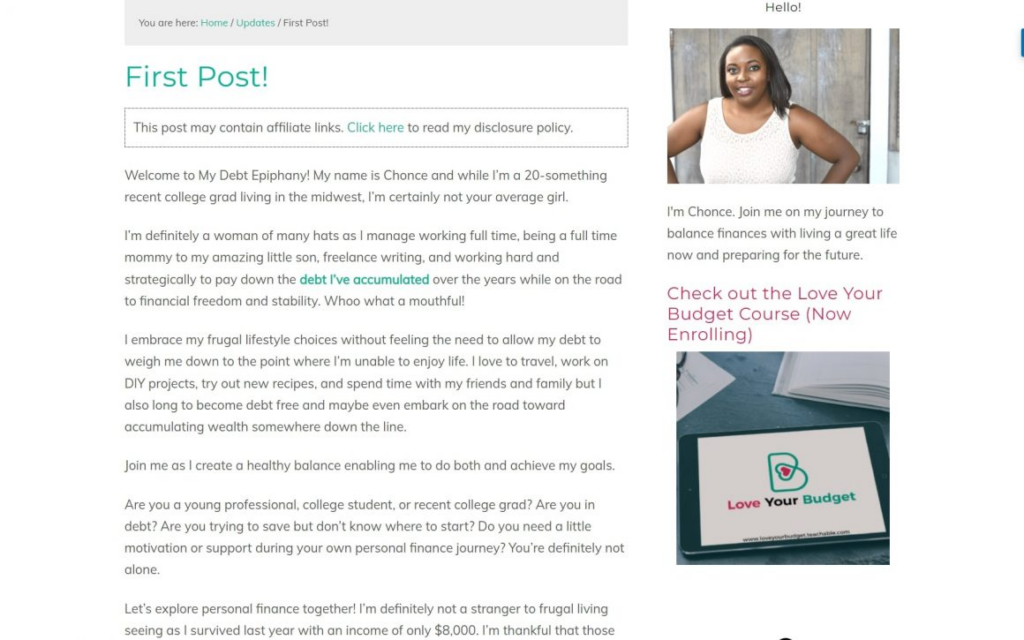
She shared a personal story about debt to better guide her audience, addressed their pain points, and shared her goal – to live debt-free while helping her readers master their personal finances.
3. Focus on what you want people to know.
Do you want your readers to know why you started a blog, what problems you want to solve, what content they can expect, or what products or services you promote (if any)?
Focus on this in your first blog post – without overwhelming people with details. Ultimately, it’s all about arousing interest. It is crucial to inform future readers about your planned content. It will grab their attention and entice them to tune in regularly.
Jamie Hord by Horderly did it perfectly.

She began with an introduction welcoming her readers and then moved on to three sections:
- Why she started Horderly;
- What people can expect from their posts;
- How she redesigned her website.
Not only did she share her vision and story (with personal photos), but she also encouraged readers to reach out and share advice so she could continually inspire them.
4. Brainstorm your topic.
By focusing on your blog’s main topic, you can grab people’s attention – and establish yourself as an expert in your niche. Brainstorm the topic to figure out how you can use it to stand out from the crowd and add a personal touch to your post to make it unique
Here is an example of this An OCD outlook Did it.
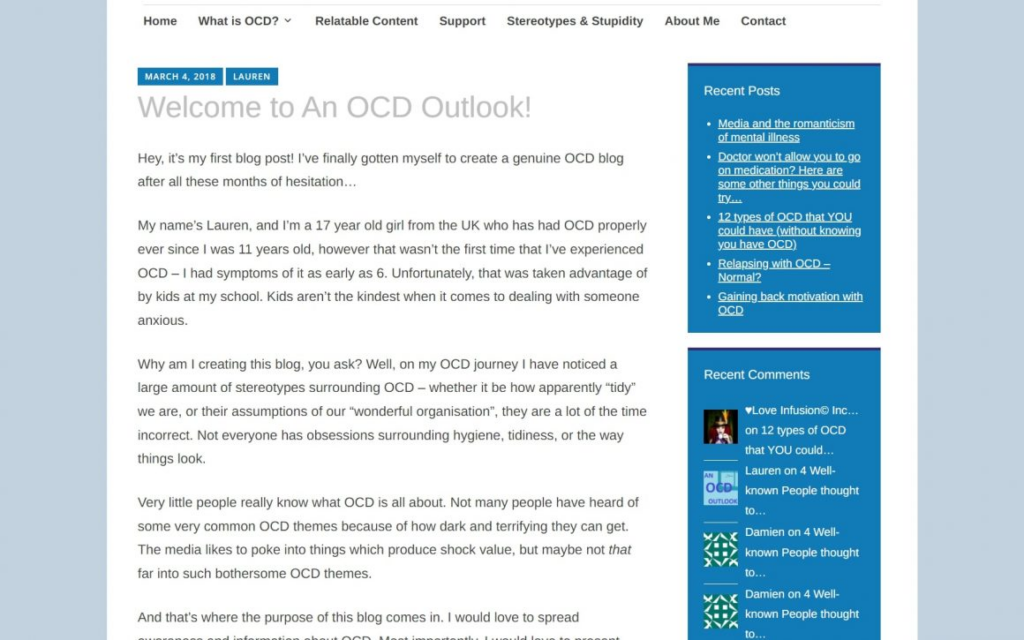
The blog’s founder, Lauren, focused her first post on her main topic – OCD. She shared a personal OCD journey and brought attention to stereotypes, assumptions, and real OCD struggles. She also let future readers know what relevant content they can expect.
5. Check out some of the best blogs.
Your successful future competitors are the best source of inspiration. Check out their first blog posts to see how they wrote and structured them – not to copy their work, but to identify gaps you can fill. Look at what they did and do it better.
Take The EverywhereistFor example. It is one of the best travel blogs – with awards from The New York Times, TIME magazineand other renowned media.
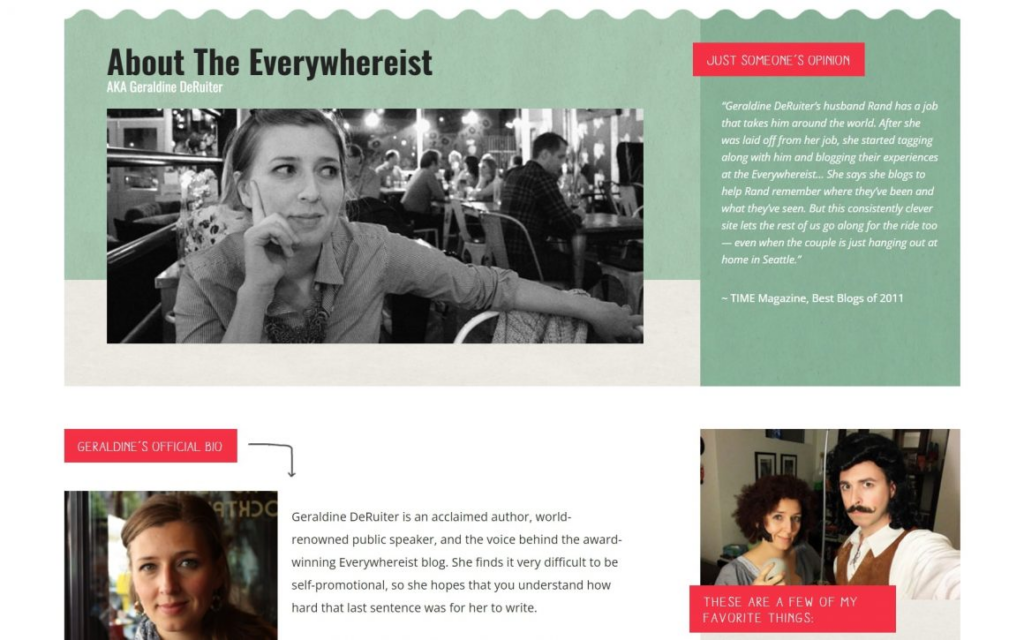
Geraldine DeRuiter added humor to her introductory blog post to highlight a unique, funny personality and establish authority. If you do something similar, you are on the right track.
6. Conduct thorough research.
In addition to the competition, research your target audience to understand their pain points and interests and discover relevant keywords to get on their radar. The deeper you dig, the better your first – and subsequent – posts will be.
Steve Chou from My wife quit her job used extensive research to start creating content straight away – without introducing his blog. His first blog post, “Why You Should Never Open an eBay Store,” is an informative article with more than 2,600 words and lots of relevant keywords, numbers, and links.
Steve Chou built instant authority with data-driven facts and step-by-step instructions – his first step to his seven-figure eCommerce store. It’s a great example for a first blog post if you want to skip the introductions.

7. Create a catchy title.
Most first blog posts don’t have a title – unless they directly address the content your readers are looking for. Creating one gives you the perfect opportunity to stand out from the crowd.
Gala darling She did this beautifully with her title “Always expanding, like the universe” – fitting for her personal development blog that promotes self-love.
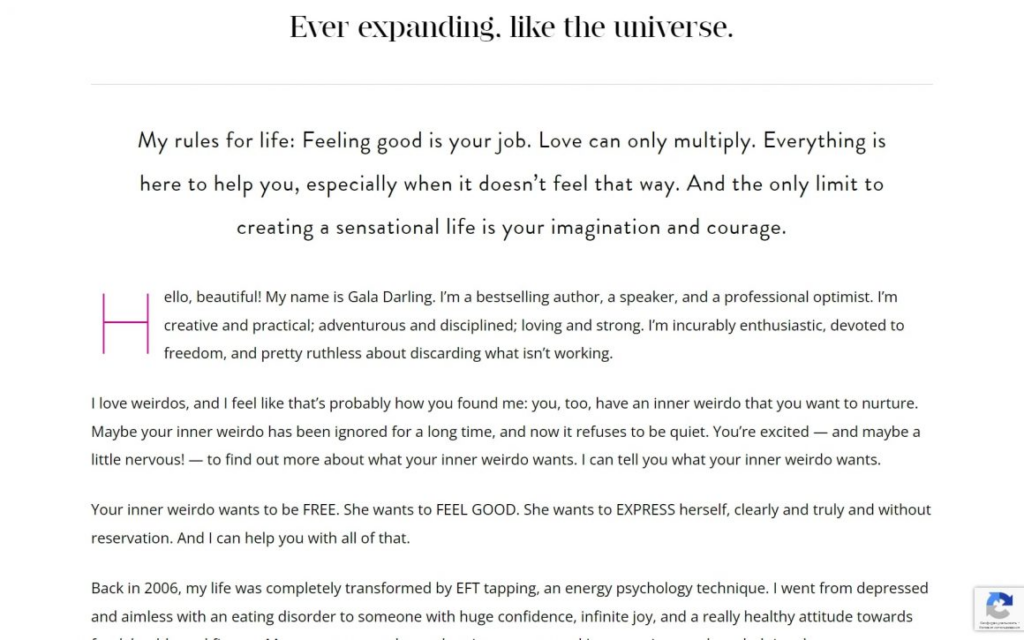
Make sure to link your catchy title – one that grabs your audience’s attention and encourages them to read further – with the content below, instantly creating a meaningful connection like Gala did.
8. Create an outline and revise it.
An outline helps you structure your blog post, organize information into naturally flowing sections, and focus on the main points.
Here is an unconventional example of this Zen habits Blog.
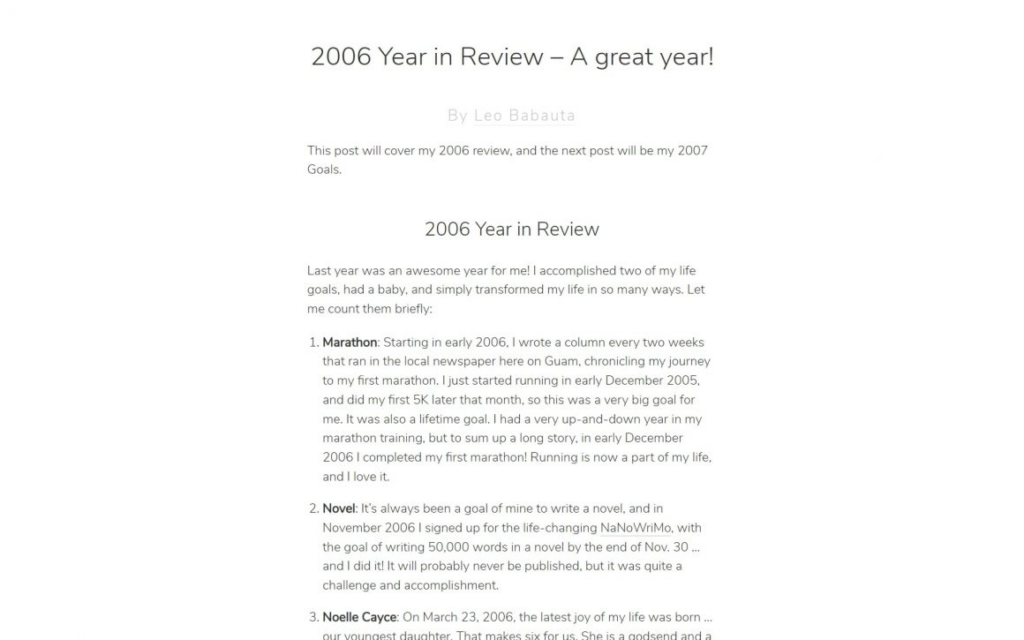
Leo Babauta’s first post is like a diary entry in which he lists his successes in 2006. Soon after, he presented a list of goals for 2007 and plans to achieve them.

It’s inspiring, piques readers’ curiosity, and entices them to stay informed and get motivational advice. It’s great for a mindfulness blog like this one. Whether you follow this example or not, take a cue from Leo’s book and create a well-structured outline that answers the five Ws – who, what, why, when, and where.
9. Remove filler text.
When did filler text ever provide value? It lengthens a text unnecessarily and can even confuse the reader.
Removing unnecessary words and phrases from your post increases engagement and increases credibility.
CityGirl meets FarmBoy is a brilliant example.
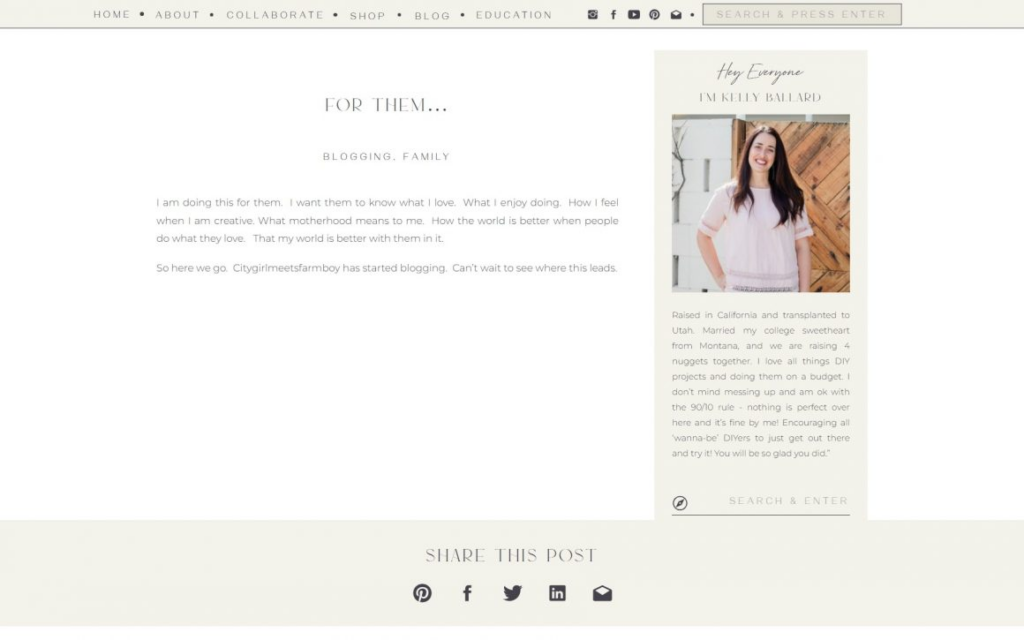
Kelly Ballard gets straight to the point, cuts out the platitudes, and shares the ultimate message of her DIY home decor blog: “How the world is better when people do what they love.”
10. Structure your blog posts correctly.
Structuring your blog posts correctly will improve your SEO. Posts with a clear structure – including an introduction, body and conclusion – rank better in search engines due to better readability.
A Girl’s Guide to DIY is one of the best examples of first blog posts in terms of an SEO-friendly structure.
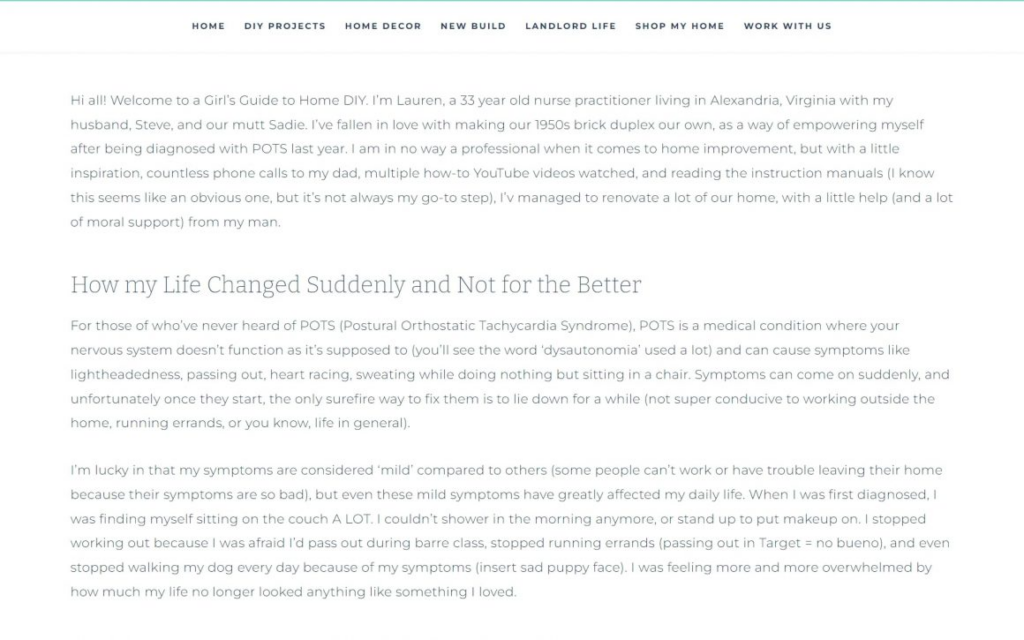
Lauren knew how to structure a blog post for SEO by telling an inspiring story and connecting with her readers.
Are you ready to start your own blog?
Creating a personal blog can be done so quickly. You first need to choose a name for your blog. This is one of the most important steps when starting a new blog.
Recommended tool:
After you choose your domain name, you need to decide on a blogging platform and a web hosting provider.
For all new bloggers, we recommend self-hosted WordPress.org and Bluehost, a company that powers over 2 million websites worldwide. You get one free domain name when you sign up with them and if you don’t like their services, They offer a 30-day money-back guarantee.
Diploma
Did you find these first blog post examples inspiring? Have you started spinning yet? It’s okay if you need more time to put your thoughts into words. Inspiration will come when you have something unique to share with the world.

